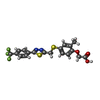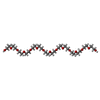Entry Database : PDB / ID : 6a6pTitle Crystal Structure of Peroxisome Proliferator-Activated Receptor Delta (PPARd)LBD in Complex with DN003316 Peroxisome proliferator-activated receptor delta Keywords / / / / / Function / homology Function Domain/homology Component
/ / / / / / / / / / / / / / / / / / / / / / / / / / / / / / / / / / / / / / / / / / / / / / / / / / / / / / / / / / / / / / / / / / / / / / / / / / / / / / / / / / / / / / / / / / / / / / / / / / / / / / / / / / / / / / / / / / / / Biological species Homo sapiens (human)Method / / / Resolution : 2.1 Å Authors Chin, J.W. / Cho, S.J. / Song, J.Y. / Ha, J.H. Journal : To Be Published Title : Crystal Structure of Peroxisome Proliferator-Activated Receptor Delta (PPARd)LBD in Complex with DN003316Authors : Chin, J.W. / Cho, S.J. / Song, J.Y. / Ha, J.H. History Deposition Jun 29, 2018 Deposition site / Processing site Revision 1.0 Jul 10, 2019 Provider / Type Revision 2.0 Jul 29, 2020 Group Atomic model / Data collection ... Atomic model / Data collection / Derived calculations / Structure summary Category atom_site / chem_comp ... atom_site / chem_comp / entity / pdbx_chem_comp_identifier / pdbx_entity_nonpoly / struct_site / struct_site_gen Item _atom_site.auth_atom_id / _atom_site.label_atom_id ... _atom_site.auth_atom_id / _atom_site.label_atom_id / _chem_comp.mon_nstd_flag / _chem_comp.name / _chem_comp.type / _entity.pdbx_description / _pdbx_entity_nonpoly.name Description / Provider / Type Revision 2.1 Nov 22, 2023 Group Data collection / Database references ... Data collection / Database references / Refinement description / Structure summary Category chem_comp / chem_comp_atom ... chem_comp / chem_comp_atom / chem_comp_bond / database_2 / pdbx_initial_refinement_model Item / _database_2.pdbx_DOI / _database_2.pdbx_database_accession
Show all Show less
 Yorodumi
Yorodumi Open data
Open data Basic information
Basic information Components
Components Keywords
Keywords Function and homology information
Function and homology information Homo sapiens (human)
Homo sapiens (human) X-RAY DIFFRACTION /
X-RAY DIFFRACTION /  SYNCHROTRON /
SYNCHROTRON /  MOLECULAR REPLACEMENT / Resolution: 2.1 Å
MOLECULAR REPLACEMENT / Resolution: 2.1 Å  Authors
Authors Citation
Citation Journal: To Be Published
Journal: To Be Published Structure visualization
Structure visualization Molmil
Molmil Jmol/JSmol
Jmol/JSmol Downloads & links
Downloads & links Download
Download 6a6p.cif.gz
6a6p.cif.gz PDBx/mmCIF format
PDBx/mmCIF format pdb6a6p.ent.gz
pdb6a6p.ent.gz PDB format
PDB format 6a6p.json.gz
6a6p.json.gz PDBx/mmJSON format
PDBx/mmJSON format Other downloads
Other downloads 6a6p_validation.pdf.gz
6a6p_validation.pdf.gz wwPDB validaton report
wwPDB validaton report 6a6p_full_validation.pdf.gz
6a6p_full_validation.pdf.gz 6a6p_validation.xml.gz
6a6p_validation.xml.gz 6a6p_validation.cif.gz
6a6p_validation.cif.gz https://data.pdbj.org/pub/pdb/validation_reports/a6/6a6p
https://data.pdbj.org/pub/pdb/validation_reports/a6/6a6p ftp://data.pdbj.org/pub/pdb/validation_reports/a6/6a6p
ftp://data.pdbj.org/pub/pdb/validation_reports/a6/6a6p
 Links
Links Assembly
Assembly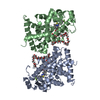
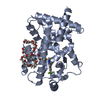
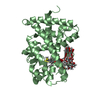
 Components
Components Homo sapiens (human) / Gene: PPARD, NR1C2, PPARB / Production host:
Homo sapiens (human) / Gene: PPARD, NR1C2, PPARB / Production host: 
 X-RAY DIFFRACTION / Number of used crystals: 1
X-RAY DIFFRACTION / Number of used crystals: 1  Sample preparation
Sample preparation SYNCHROTRON / Site: PAL/PLS
SYNCHROTRON / Site: PAL/PLS  / Beamline: 5C (4A) / Wavelength: 0.9796 Å
/ Beamline: 5C (4A) / Wavelength: 0.9796 Å Processing
Processing MOLECULAR REPLACEMENT
MOLECULAR REPLACEMENT Movie
Movie Controller
Controller


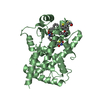
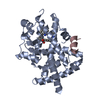

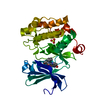
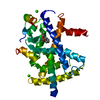
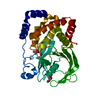
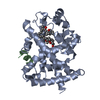

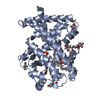
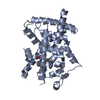

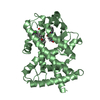

 PDBj
PDBj
